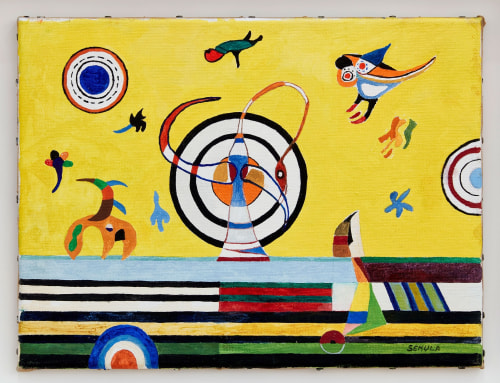
Must See: Sonja Sekula, "Works from 1942 - 1963"
By Artforum
February 2, 2023
Sonja Sekula was born in Lucerne, Switzerland in 1918 and moved with her parents to New York in 1936. She began studying at Sarah Lawrence College and subsequently at the Arts Student League in 1941. Joining the burgeoning 1940s–50s artistic community of New York, Sekula mingled with expatriate Surrealists in André Breton’s milieu and was friendly with Abstract Expressionists including Robert Motherwell and Jackson Pollock. She became neighbors and close friends with John Cage and Merce Cunningham, for whom she designed dance costumes. Sekula first exhibited at the seminal gallery of Peggy Guggenheim’s Art of this Century in the exhibition 31 Women in 1943; later showing at Betty Parsons Gallery in 1948, she would have five solo exhibitions there over the next decade. Sekula was also included in the influential landmark 1951 exhibition, 9th Street Show.
The period from the early 1940s through the end of Sekula’s life in 1963 illustrates the artist’s experimentation, distinctive mark-making, and poetic musings that define her multidimensional approach and diverse styles. Her works in the 1940s emphasized biomorphic forms and the painterly style of European Modernism, oscillating between Surrealism as conveyed by Roberto Matta, and that of the newly emerging tendencies of Abstract Expressionism. Evoking her New York surroundings, Sekula created imagery modeled on the cityscape with architectures of multi-perspectival spaces. Travels to New Mexico and Mexico during the mid-1940s and an appreciation of North American Indigenous cultures would also influence her work.
Struggling with mental health issues throughout her life, Sekula’s severe breakdowns in New York beginning in the early 1950s would lead her to permanently move back to Switzerland in 1955. She would then favor works on paper on which she would occasionally inscribe poetic or diary like texts. Considering Sekula’s under-recognition after her death, Samantha Friedman, curator at MoMA, has noted that this is perhaps due to her psychological issues, her identifying as a queer woman without the support of a prominent male artist or critic, and her refusal to adhere to a singular style. In 1963, Sekula would take her own life in Zurich, leaving behind an oeuvre of remarkable importance that has only begun to be reassessed over the past decade.